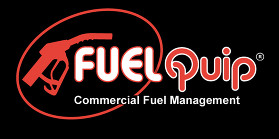What Is Fuel Conditioning Treatment
There is an increasing amount of processes that can take place within the lubricant and one of these is conditioning of the products. If you are new to this process then you will probably be wondering what is fuel conditioning treatment.
Product conditioning treatment is a process which is concerned with the treatment of lubricant oil and it uses a booster system in order to meet standards. The standards that need to be met include cleanliness, viscosity, flow rate and also temperature. This process is conducted by engine manufacturers and they have very strict standards that need to be met. These standards are vital for combustion performance of the engines, which makes them very important to comply with, in terms of both reducing emissions and efficiency of energy.
Gas conditioning is a system that is used for the treatment of production gas in a raw format. These systems are designed to deliver a gas which is treated and clean and this tends to be used to generate power for generators and turbines.
At the core of technology, product conditioning is something that is very important. These systems are manufactured and designed to be resistant to corrosion and they incorporate permanent magnetic materials which are state of the art.
In diesel engines, there are units installed between the primary filters and the tank. In oil or liquid product storage tanks, the system is installed to re-circulate the liquid throughout the tank. In both of these applications, the lubricant is being continuously treated with either the re-circulating process of the engine.
The main part of the operation is induction and this occurs when a conductor or a charged particle moves in a magnetic field. Kinetic energy which is motion of movement gets converted into electrical energy as the conductor intersect the lines in the magnetic force and this causes the electrons to change their behavior.
In diesel, chemical changes and oxidation are caused by a result of microbial activity and water causes stratification, sludge and polymerization, which builds up in the tank. When this happens the liquid product will turn cloudy and dark, which results in the fuel not burning in an efficient manner and this can sludge in the tank or clogging in the filter.
The flow of fuel through the system creates an induced electrical charge, which then affects the polar relationship of agglomerates and clusters of polymers and lubricant molecules and these make up the fuel stream. The agglomerates of asphaltene and paraffin results in the dissolving and breakup which then restores color in the lubricant, increasing filterability, reduces emissions and enhances combustion. Fuel that has been treated tends to burn in a more efficient manner and this results in the production of more energy and it leaves less unburned and released as soot, smoke and other emissions that are harmful.
In a lot of cases diesel-powered engines have the ability to pull more from the tank than they actually require. The excess fuel is returned to tank where it dilutes the agglomerations and reverses the sludge process which is caused by aging.


